As Ola’s mobility business takes a hit due to COVID, the company shuts down its car lease scheme which had covered thousands of drivers across the country
During the first COVID wave, Ola allegedly took away the leased cars from the drivers for maintenance and sold them off to OEMs
Bhavish Aggarwal’s firm now faces ire from the drivers who have taken a legal route to fight the ride-hailing giant
It seems a long time ago now, but it was only in March 2020 that Ola
But around the same time, another curious thing was happening with Ola drivers, which has now snowballed into a massive legal battle between the company and the very drivers on the back of which Ola raised millions.
In Lucknow, Bengaluru, Hyderabad, Delhi, Jaipur and other cities, Ola drivers are banding together to fight legal battles against the Bhavish Aggarwal-led company over what they simply call cheating and exploitation of workers. The cases are linked to the now-shuttered car leasing service that Ola ran between 2015 and 2020, before the pandemic.
Thousands of drivers signed up for leases with Ola to purchase cars with daily rental payments, but now drivers have alleged that Ola simply cheated them out of their money by reneging on the contract under various pretexts.
Like Raza, a 29-year-old Lucknow-based Ola driver, who told us, “Since we were not running during Covid, we were happy to have Ola take our cars and keep them after maintenance. In Lucknow alone, nearly 759 cars were taken on lease,” Raza claimed, adding that hundreds of these were taken back by Ola and held in the service yard, but never returned to drivers.
Not just this, other drivers alleged that many of them had all but paid off the lease on the car and were on the verge of complete ownership of the vehicle.
For the past few weeks, Inc42 has spoken to drivers involved in court cases and reviewed police complaints. At least 72 drivers in Lucknow alone have come together to file a complaint which has led to a case against Ola Fleet Technologies (which ran the Ola car leasing scheme) under Sections 420 and 409 of the Indian Penal Code) in Allahabad High Court (Lucknow bench).
These sections relate to cheating offences, with the accused criminally liable for imprisonment of up to seven years and a fine. The next hearing in the case will be held on August 13, 2022.
This follows an FIR lodged in Lucknow against Ola Fleet Technologies, the company operating the leasing service, and Mahindra & Mahindra subsidiary Mahindra First Choice Wheels, which was the eventual reseller of the vehicle alleged to have been illegally confiscated.
Inc42 has seen this FIR and others in Hyderabad, where a group of drivers has alleged in their complaint that the arbitrary terms and conditions of Ola’s car leasing scheme had crushed the driver community.
Ola did not respond to any of our questions on the allegations or indeed the court cases, but by the time the dust settles on this saga, the ride-hailing unicorn will likely have a lot more questions to answer from courts and law enforcement about its operations, the lack of transparency and allegations of trying to undermine the legal efforts. So what exactly happened here?
2019: Ola -Uber battle gave birth to Bhavish Aggarwal’s car lease dream
For Manjunath, the year 2019 changed everything. The 35-year-old cab driver from Hyderabad always dreamt of owning his own car instead of renting one from a cab fleet owner and in 2019, when he saw that Ola would start selling cars to drivers after a leasing period, Manjunath was surprised by how easy it was to sign up and take a step closer to his dream.
“The onboarding was very fast. Ola was dishing out attractive offers like paying a driver INR 3,000 to refer another driver to the car leasing service,” Manjunath recalled
“At that time and even a few years back in 2015, Ola was leasing out cars including Xcent, Sedan, Indica, Ritz to drivers. There actually was no dearth of cars. They seemed to run out of drivers,” he added.
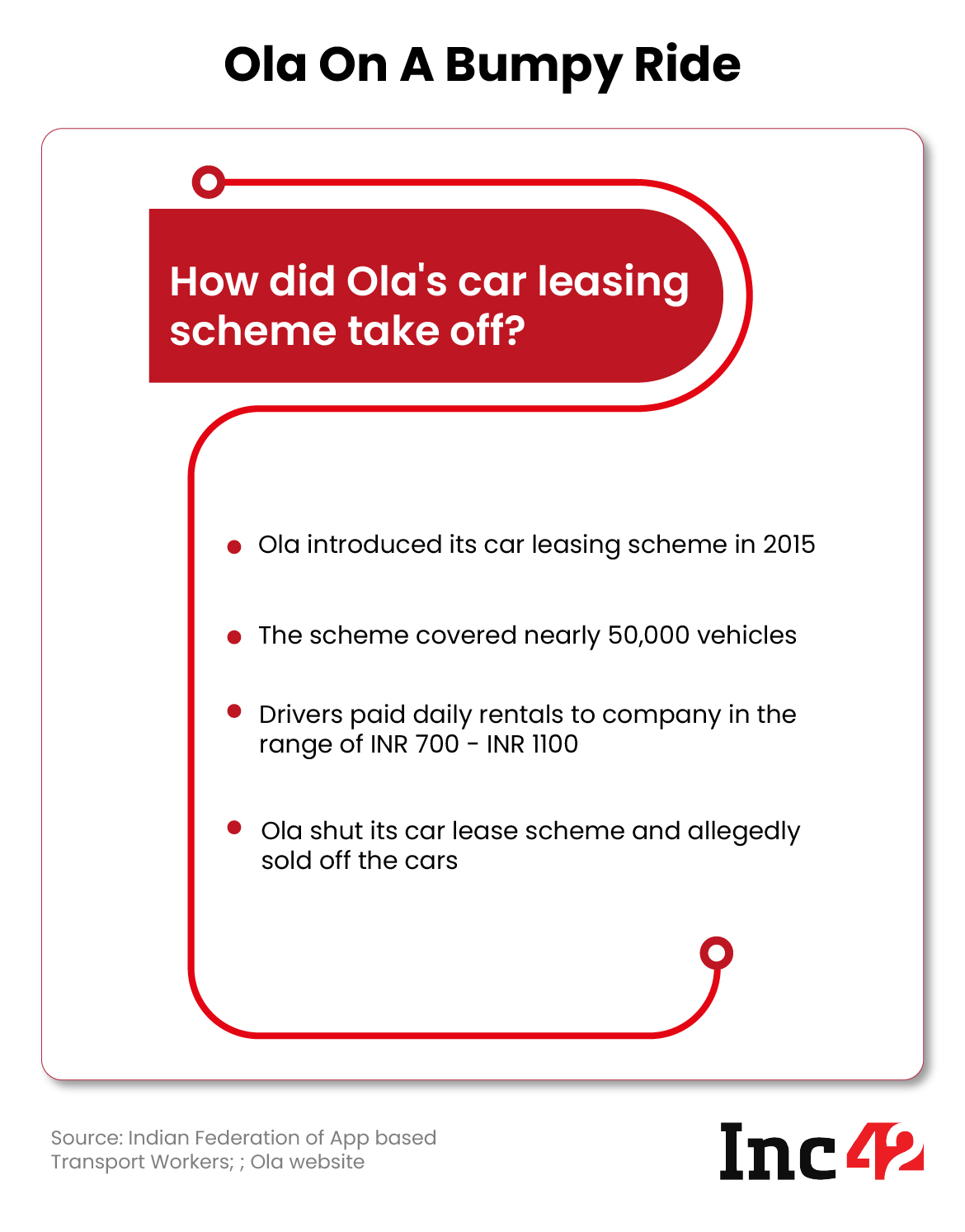
While in 2022 and in the post-pandemic world, the impact of mobility is apparent, between 2015 and 2019, ride-hailing was booming in India. Uber and Ola were fighting for each square, and Ola saw the car leasing business as a walled garden to keep its drivers away from the competition.
As it is, owning a vehicle was a tough proposition for many drivers since they did not always have the right credit history of approaching banks. So Ola jumped in to solve the problem with its leasing model that it promised would be eventually completely owned by the driver in four years. All they had to do was pay up to INR 1,100 as daily rental and INR 17,000-INR 30,000 as a “refundable” security deposit.
“No Badge, No Tension.” Ola’s ads promised just about anyone looking to buy a car — not just those with commercial driving licences.
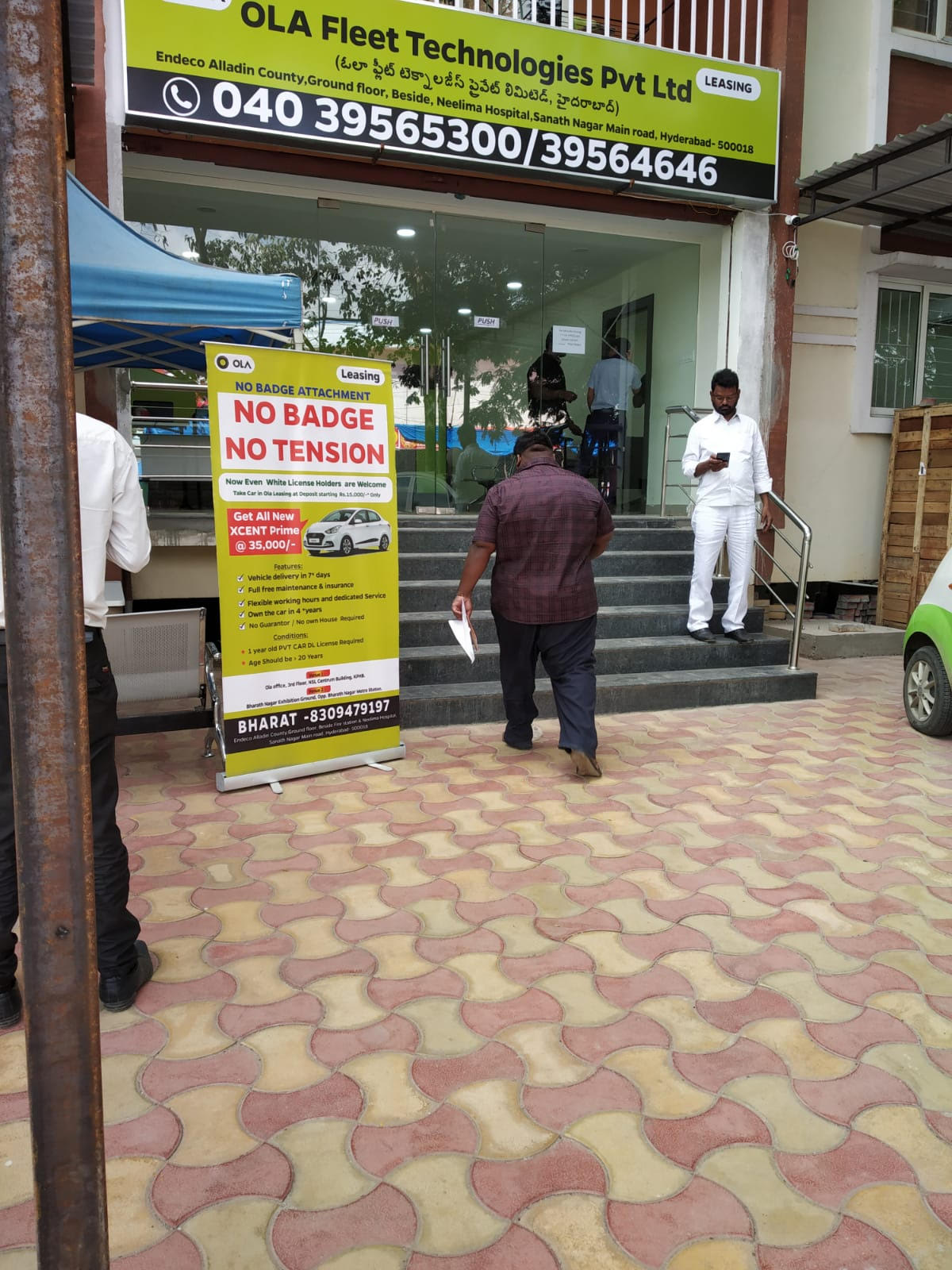
That was till 2019, when Ola was super bullish about its business. But Shaik Salauddin, the national general secretary of the Indian Federation of App-Based Transport Workers (IFAT), describes the situation now as some kind of joke. “A driver spent nearly INR 5 Lakhs to own a car, shared a part of his earnings with the company and even the cars were taken back,” he adds.
IFAT has been key in taking many of the driver-side challenges to authorities. Data sourced from the union suggests that Ola leased out more than 50,000 cars across India from 2015. A back-of-the-envelope calculation indicates that including the security deposit charged and the daily rentals in the range of INR 700-INR 1000, Ola earned close to INR 1,000 Cr annually from its car leasing service.
In Lucknow, a taxi drivers association even approached Mahindra First Choice, who had allegedly purchased the cars from Ola.
“The Mahindra First Choice manager gave us in writing that Ola told them that they had a No Objection Certificate from drivers for selling cars. This is totally false,” Raza alleged.
Inc42 has reached out to the Mahindra Group over the issue. We shall update the story if and when the company responds.
A source close to Ola’s leadership told us, “The idea was good to pitch to investors and a good move away from the conventional ride-hailing where taxes, fuel charges eat into margins. But here as well, the costs of car purchases by Ola and not being able to lease out all the stocks proved to be a shocker. It didn’t go the way Bhavish wanted.”
Ola’ Leasing Scheme On Bumpy Ride
Purchasing cars from OEMs proved to be a cash-heavy exercise which wasn’t offset even with payments from drivers. As per sources, Ola chose vehicles from OEMs that did not have a big history in India and soon was forced to move on to Maruti and Tata as suppliers for the cars.
But Covid made this business nearly impossible to sustain, given that drivers were not getting any income to make their lease payments. Drivers who had been on the road with Ola leased cars for nearly four years risked breaching their contracts if they didn’t pay the daily fee.
As Covid slammed the brakes on India’s mobility sector, and with the number of rides down by as much as 70%-90%, ride-hailing companies were bleeding money. Ola trimmed 25% of its workforce, equivalent to 1,400 people, as revenue fell by 95%. Uber also laid off 600 people in India.
And amid this upheaval, Ola pulled down the shutters on the car leasing scheme. As per Ministry for Corporate Affairs filings, Ola Fleet Technologies’ loss after tax doubled to INR 686 Cr in FY21 from INR 377 Cr in FY20. The revenue from operations saw a huge decline to INR 43 Cr from INR 545 Cr.
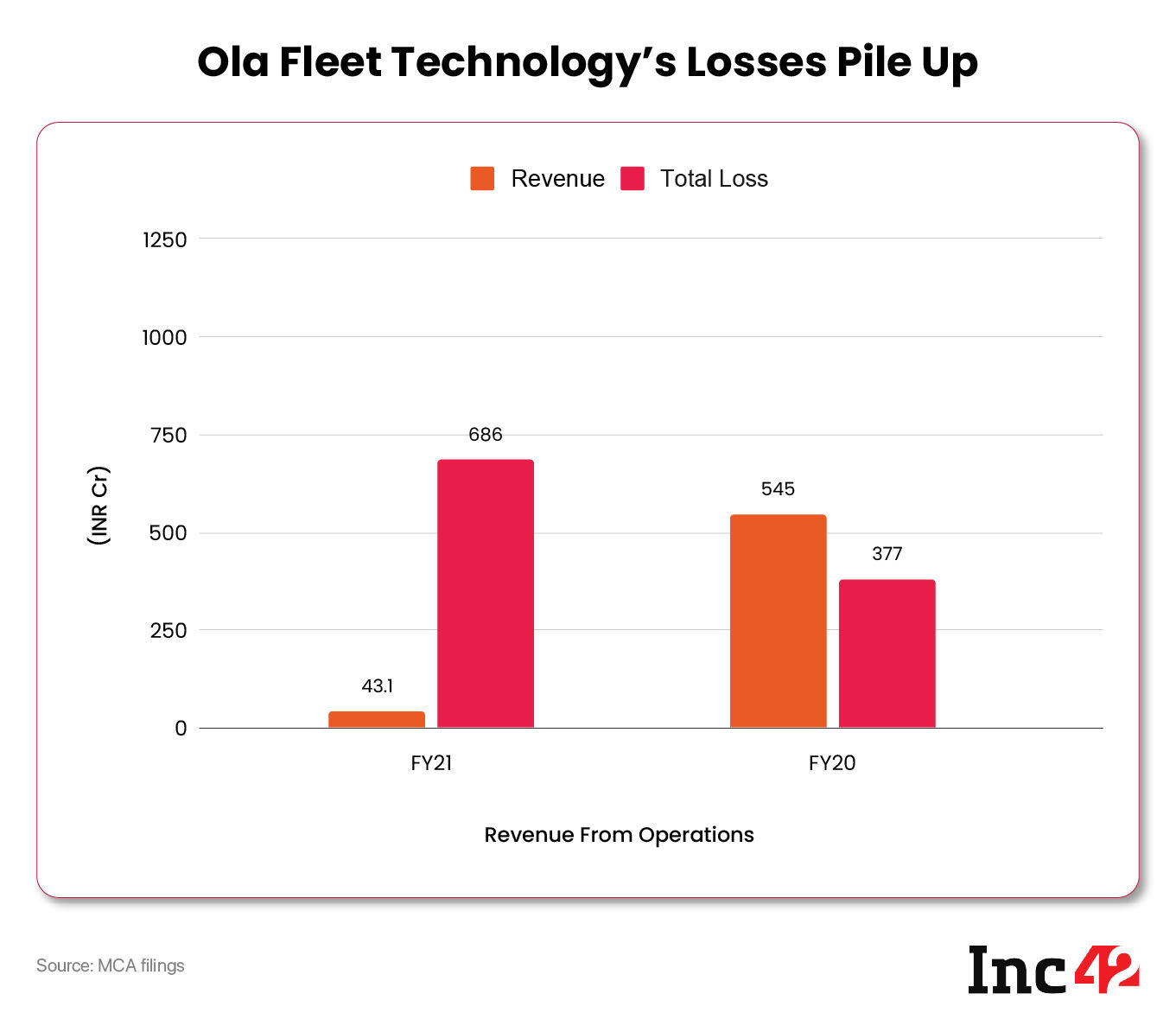
In its earnings report, the company noted that the pandemic and lockdowns had impacted revenue of the company badly, but added, “Ola is the largest vehicle lease provider in Asia considering the fleet size of 32,879 vehicles as of March 2021. The FY20-21 has been the year of the pandemic with all the vehicles in yards for the most part of the year, yielding negligible revenue.”
In many cases, drivers alleged that Ola pointed to the lapsing of the four-year lease period to take the cars back, but others like Raza also claim that Ola allegedly took back vehicles before the lease period had lapsed.
“The drivers were not handed over the contract lease copies. We were informed that the agreement will be applicable for 1,480 days or four years excluding the days when the driver is not working. In many cases like mine, the lease period is not over yet and the cars were taken back. Isn’t this criminal?” Raza questioned.
As they suffered a drop in earnings and with many cars being taken away, hundreds of drivers across India have taken the legal route. Following this, Aggarwal and Ola are said to be trying to convince some drivers to arrive at a settlement.
A Maze Of Litigations For Ola
As per legal experts, there could be severe repercussions for Ola based on the allegations.
“The arbitration settlement which was ordered has failed. Both the parties failed to reach any settlement due to differences in the amount which would be payable to the company by each driver in return of the ownership of the car,” advocate Ganga Yadav who is representing 72 Ola drivers in Allahabad High Court told Inc42.
He added that the company has 45,000 cars leased out across the country and hence any settlement amount arrived at could be legally applied elsewhere in the country.
A driver involved in the Lucknow case added that Ola is allowing drivers to take back the car after paying INR 50,000-INR 60,000. But whether these cars will be fit for driving after being in the yards for years is unclear.
On June 29, 2022, the Chief Judicial Magistrate in Lucknow ordered investigations into Ola’s car leasing service under Section 157 of the Criminal Procedure Code mandating lodging of further FIRs by concerned police authorities.
Under Section 157, in cognizable offences, it is the duty of the officer-in-charge of a police station to send “a report” to the Magistrate having jurisdiction and then proceed to investigation. This report is known as an “occurrence report”.
On July 7, 2022, two more FIRs were lodged following the CJM order in Vibhuti Khand police station, Lucknow East, under sections 409 and 420. One of the FIRs seen by Inc42 quotes a figure of INR 1,59,39000 being taken from drivers in Lucknow by Ola under the pretext of a car lease programme.
It adds that Ola started auctioning cars from July 23, 2021 onwards, and in a few cases, the cars were allegedly forcibly taken by the ride-hailing firm and stationed in various yards of the city.
Another criminal complaint has been lodged in KPHB Colony Police Station in Hyderabad. One of the drivers involved in the Hyderabad case claims to have paid approximately INR 8 Lakh, while others are said to have paid nearly INR 10 Lakh to Ola through daily instalments.
The Hyderabad FIR also notes the increasing commissions, arbitrary rating system and penalties on drivers for ride cancellation are making it difficult for drivers to earn their living.
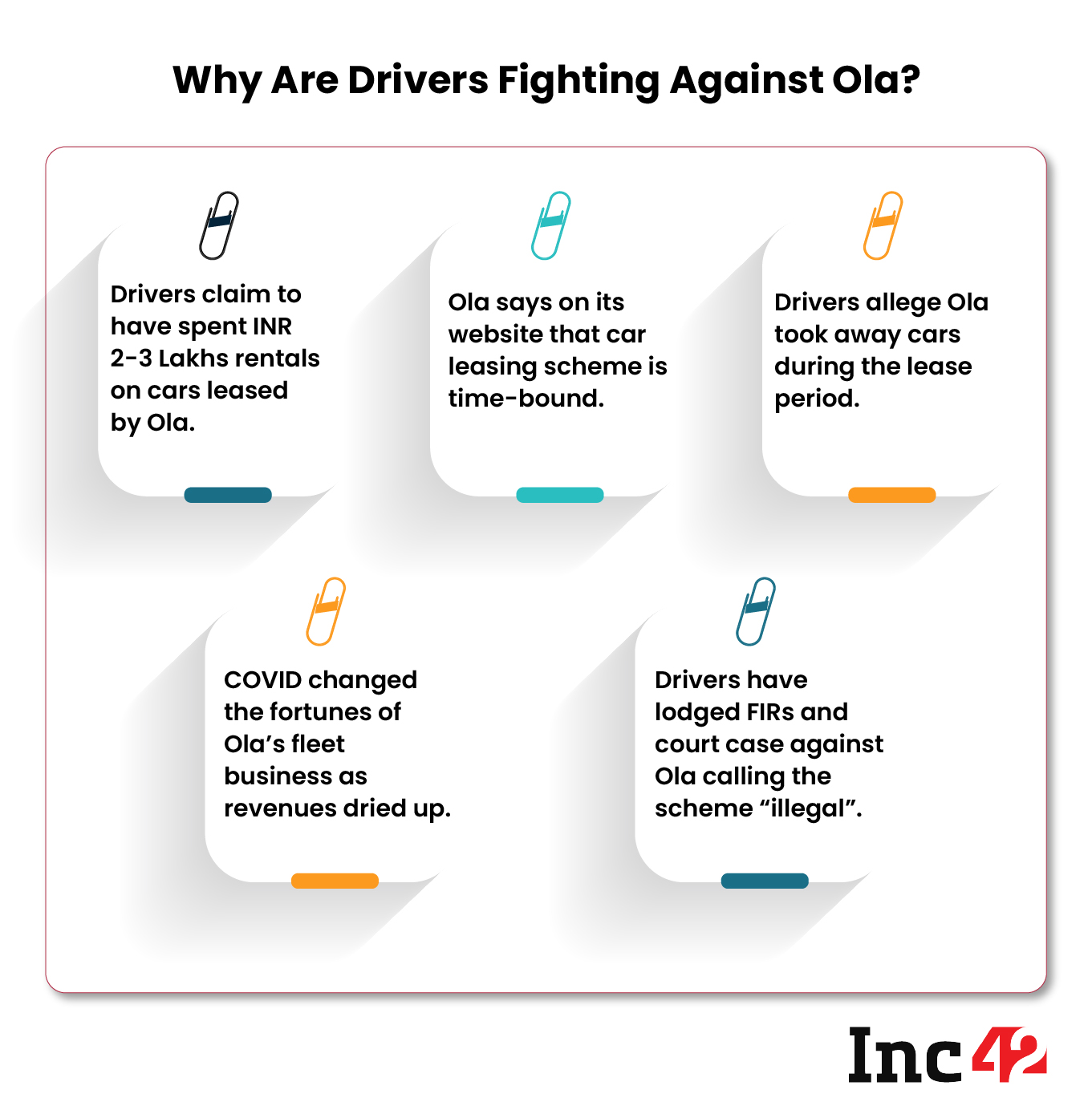
“It is a do or die situation for us. Matter of our survival. We might not be able to hire the top most lawyers, but we will fight tooth and nail,” added IFAT’s Salauddin.
Unlike in the past, where gig workers and drivers have complained about unfair working conditions, the problem this time is that Ola is being alleged to have directly cheated some drivers. In fact, without access to their lease contracts, which have been removed from their Ola applications, there’s no way for many of the drivers to verify the terms of the agreement they had signed up for.
“It is a human interest issue. Despite all the capital infusion in tech startups over the past decade and billion-dollar valuations, the human capital is of huge value. This is how India’s IT industry grew at disproportionate levels, by valuing the human capital. The tech startup ecosystem needs to follow suit,” a veteran investor said.
Will The Government Step In?
Even as the Indian government has notified guidelines to address wider ride-hailing concerns, including commissions, surge fares, working hours, portability and more, industry insiders believe that the implementation has many gaps. Not only have commissions charged by the companies increased, but GST and customer service fees have also curbed driver earnings.
Despite central government guidelines, it has been left to the state governments to enforce the rules. This gives leeway to ride-hailing companies to implement differing policies in each state.
The Indian government’s policy think tank, NITI Aayog, recently recommended social security cover for gig workers and noted that the platformisation of work has given rise to a new class of labour outside of the purview of the traditional dichotomy of formal and informal labour.
It’s hard to estimate just how many Indians make a living from the gig economy, given the unorganised nature of some of the segments, but according to a Boston Consulting Group study, more than 8 Mn citizens will be part of the gig economy in India, which is expected to grow to 24 Mn by 2023-24 and 90 Mn before the end of 2030.
The Niti Aayog cited a recent UK Supreme Court which led to the reclassification of Uber’s driver-partners in the country as “workers”, adding that a similar regulation is needed in India.
Even as drivers continue to take the legal battle forward and push back against alleged forced auctions of the cars that were leased out to them, they also are seeking a solution to these endemic problems.
“We have been hearing about the social security cover for a while now. The finance minister, Nirmala Sitharaman, talked about it in the parliament. What we are seeking is effective implementation and a legal framework so that the workers can fight the battle against mighty tech companies if they are wronged,” IFAT’s Salauddin said.




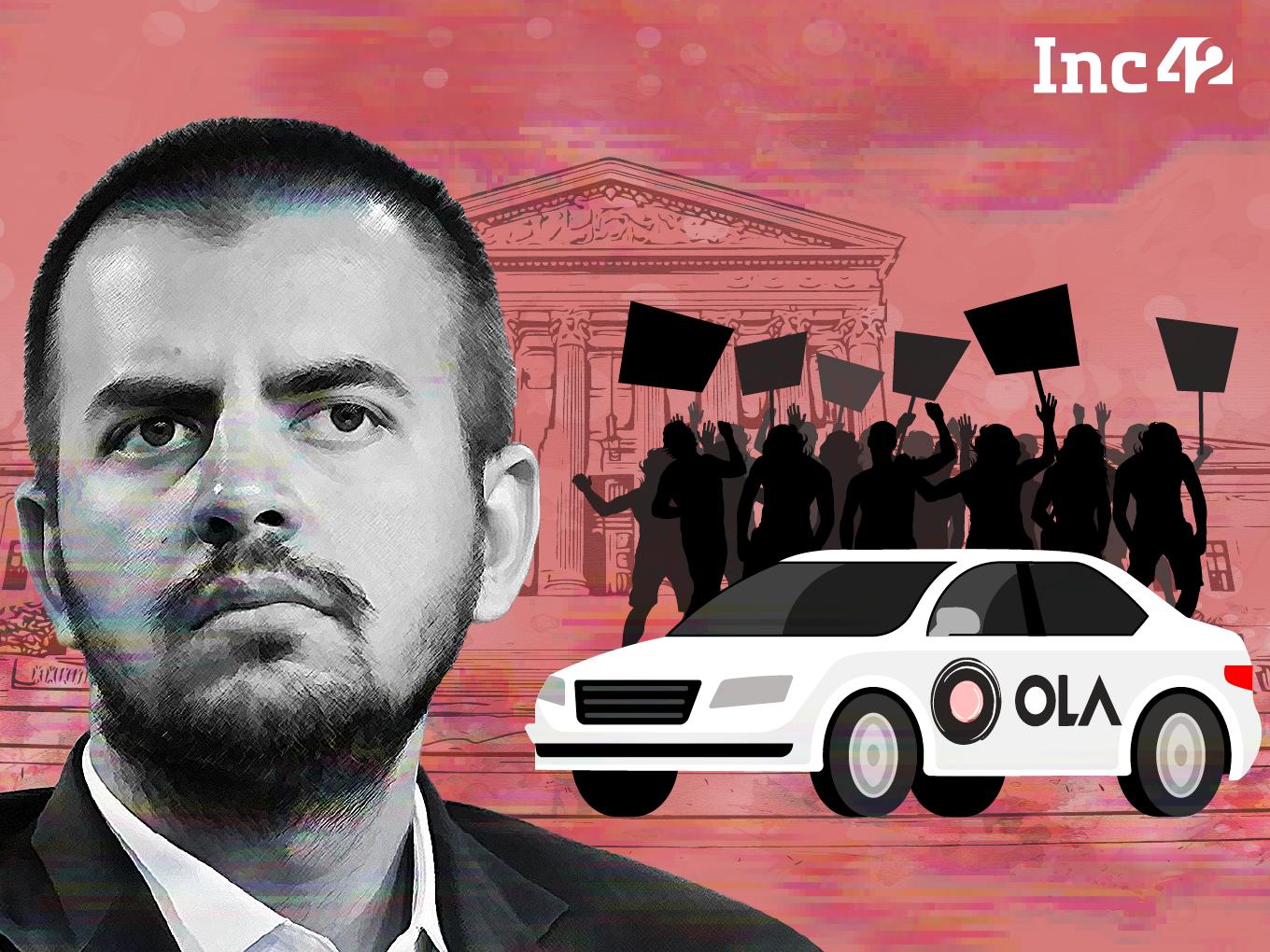



























 Ad-lite browsing experience
Ad-lite browsing experience